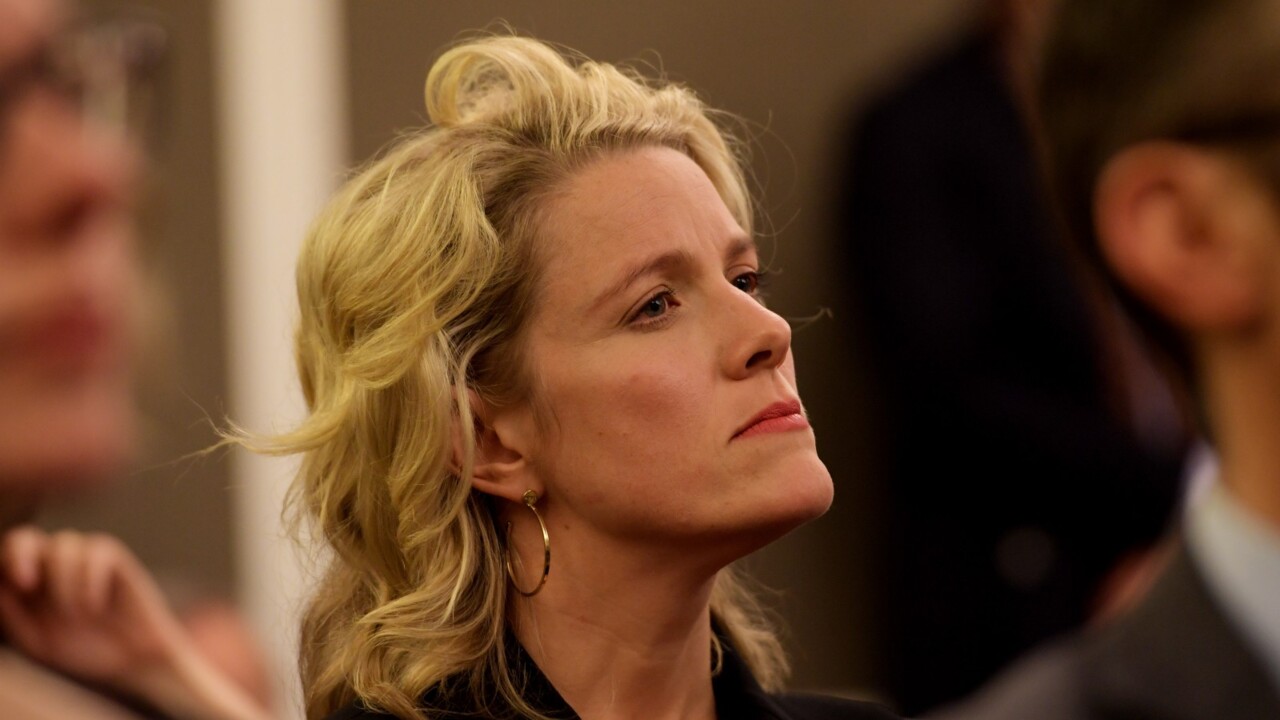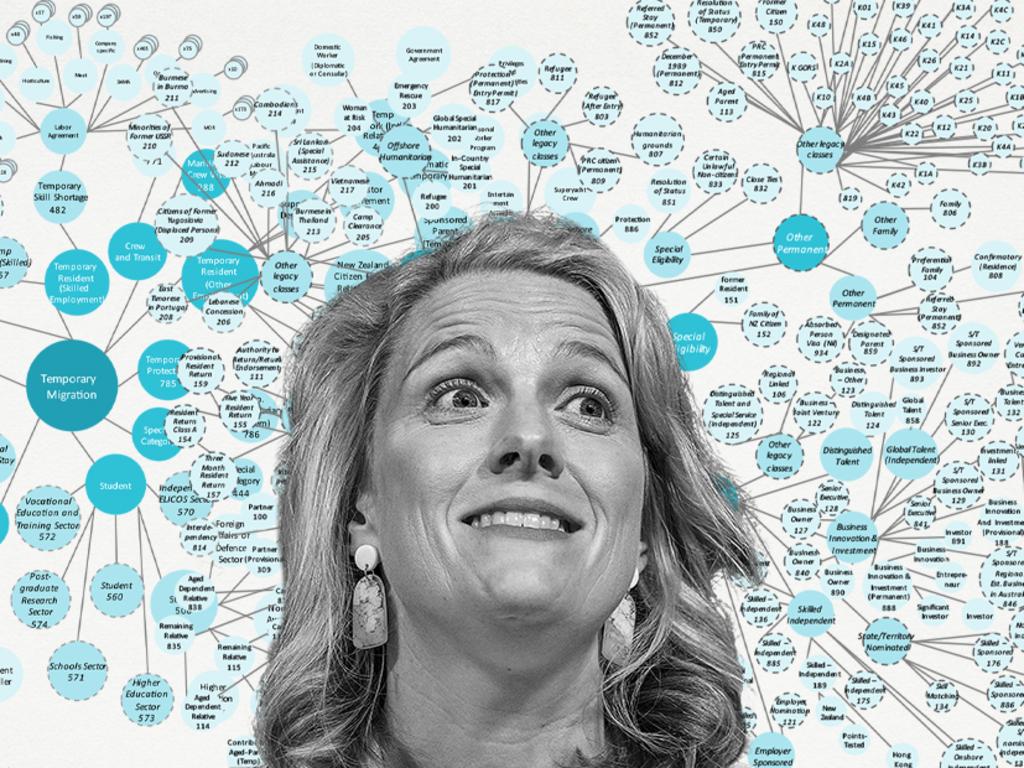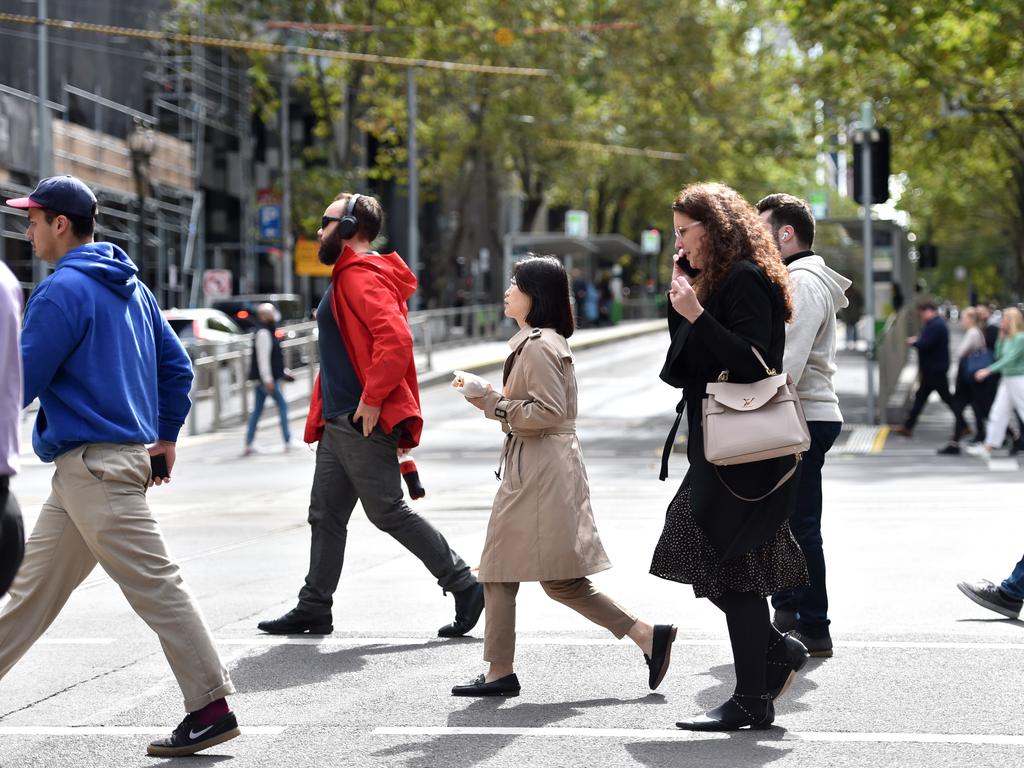Fast-track for foreign workers in migration shake-up
Clare O’Neil will implement a sweeping overhaul, providing 2.1 million temporary migrants with pathways to permanent residency and tightening citizenship rules to align with Australia’s skills needs.

Home Affairs Minister Clare O’Neil will implement a sweeping overhaul of the migration system, providing 2.1 million temporary migrants with pathways to permanent residency and tightening citizenship requirements to align with Australia’s skills needs.
The government strategy to emulate Canada’s world-leading labour migration regime includes key measures in the May 9 budget, with other major changes to the immigration system rolling out across the year.
Ms O’Neil on Thursday announced the first increase to the Temporary Skilled Migration Income Threshold (TSMIT) in a decade, ordering a July 1 lift in the minimum rate paid by employers to temporary skilled shortage visa holders from $53,900 to $70,000.
As Australian employers fall behind in the race for global talent, the federal government has also committed to giving temporary skilled workers pathways to permanent residency by December.
The Home Affairs Department will also lead an aggressive push to retain more highly skilled international students and weed out foreigners using tertiary education as a backdoor for work, as new data shows only 33 per cent of graduates are working in jobs equal to their skill levels.
Speaking at the National Press Club in Canberra following the release of the 190-page review into the migration system, Ms O’Neil said: “This does not mean an expansion of our capped permanent program.”
After raising the 2022-23 annual migration cap to 195,000 at last year’s jobs summit, Ms O’Neil said she was not advocating for a “big Australia” and the changes would “not mean more people”.
“It simply means that a group of temporary workers who had been denied even the opportunity to apply for permanent residency will be able to do so,” she said.
“We want to increase competition for permanent resident places and ensure we don’t leave more workers in limbo, bouncing from visa to visa.”
In her speech, Ms O’Neil criticised the current visa system as a “bureaucratic nightmare” with too many different permits on offer.
“Our system is slow and crazily complex,” she said. “This has real consequences for the quality of our migration program. We have hundreds of visa categories and subcategories.
“It is a mess of three-digit visa codes – the 186, the 864, the 408 – so complicated that if I drew you a diagram it would look like a tangled bowl of spaghetti.”
Unions, business and university groups endorsed the government’s initial migration reform package but warned further work was required.
With net overseas migration on track to hit 650,000 in the next two years, opposition immigration spokesman Dan Tehan accused Labor of supporting a “big Australia pathway by stealth” and called for evidence backing up Ms O’Neil’s claim the changes would “lead to a reduction”.

Former Department of Prime Minister and Cabinet secretary Martin Parkinson, who led the migration review, warned there were too many visa classes and a new approach was needed to better match Australia’s skills needs with overseas workers.
Australia’s pursuit of more highly skilled workers – to support the $368bn AUKUS submarine building project, accelerate the net-zero transition and grow the cyber security and tech workforce – has exposed severe deficiencies in the migration system.
Dr Parkinson, whose review sets out 38 reform directions to the government, said the current “points system” determining who becomes an Australian citizen required an overhaul.
The former Treasury secretary, who prepared the review alongside temporary labour migration legal expert Joanna Howe and former senior Deloitte partner John Azarias, said the granting of citizenship under current settings often came down to whether the migrant was working or studying in regional Australia.
“For the life of me, I can’t see how they necessarily are the determinants of long-term success for Australia,” Dr Parkinson said.
Describing the migration system as “not fit for purpose”, he said the government must plan migration based on net overseas migration, accounting for both permanent and temporary residents, rather than simply relying on permanent migration caps.
The Albanese government, which is targeting the mid-year economic update in December for further funding announcements, will shift powers to the newly established Jobs and Skills Australia to revamp outdated skilled occupation lists.
A three-tiered approach to skilled worker visas, which anchors the government’s strategy, is centred around the major increase to the TSMIT. A separate approach will be developed for lower-income industries with chronic labour shortages, such as the care economy and agriculture, although Dr Parkinson said this would not involve creating new visa classes.
“The skilled occupation lists for temporary workers … are outdated. They don’t reflect the needs of the modern economy,” he said.

The higher wage threshold creates a separate tier of employer-sponsored foreign workers who will get access to a streamlined visa application process.
In response to concerns about the impact of migration on housing, infrastructure and services, particularly in the regions, Anthony Albanese will draft the states and territories at a national cabinet meeting in Brisbane on Friday to lead a whole-of-country migration strategy. Under a multi-year reform program requiring legislative changes, major investments in technology and a boosted public service, the government will end the addition of new visa classes and streamline existing visa classes.
Immigration Minister Andrew Giles is expected to announce smaller changes in coming weeks to encourage more workers into the aged care sector to help meet Labor’s election commitment of 24/7 nurses and mandated care minutes in nursing homes.
The new immigration pathway will be announced as part of Labor’s final migration strategy, expected in July. The Australian understands it will be capped, regulated and developed with input from government, unions and industry.
Ms O’Neil said lifting the TSMIT would transform current settings from a “guest worker program” to a “skilled worker program”. Under existing settings, the threshold had fallen below the earnings of about 90 per cent of Australia’s full-time workers.
More Coverage








To join the conversation, please log in. Don't have an account? Register
Join the conversation, you are commenting as Logout